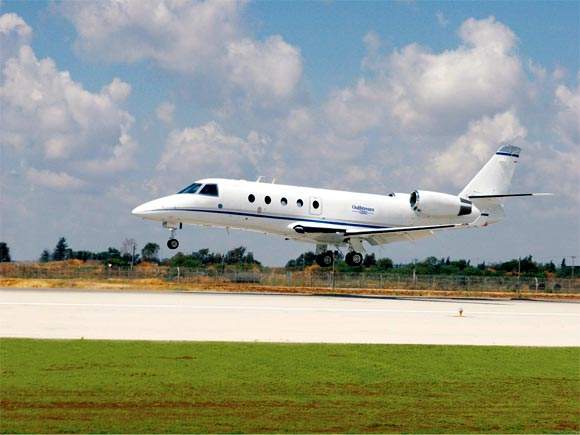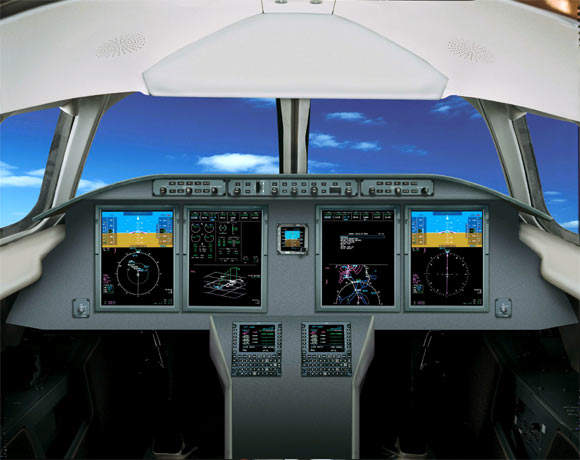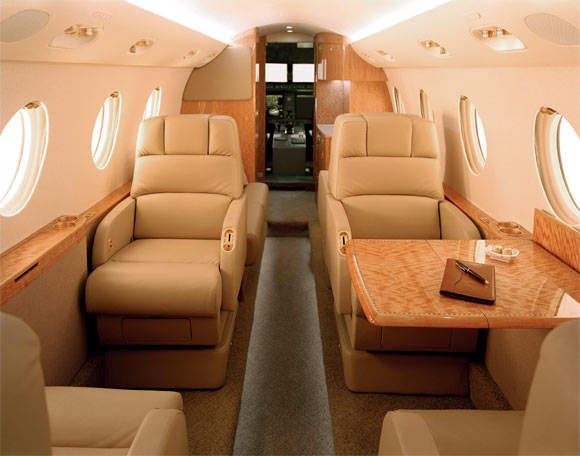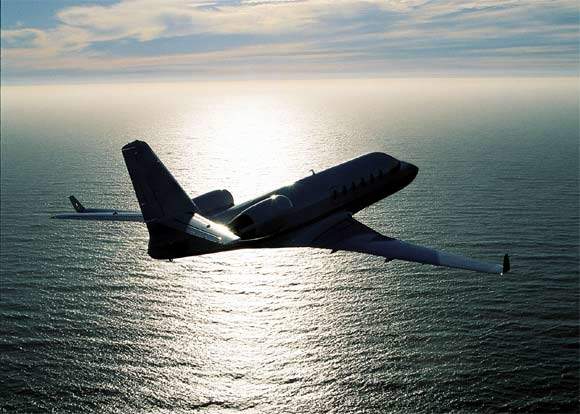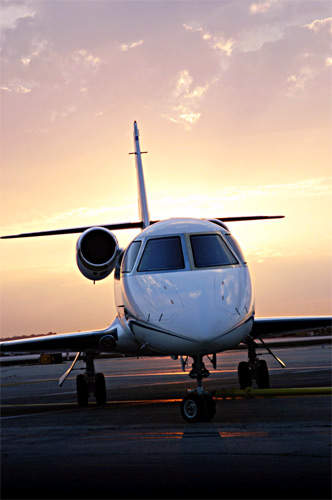Gulfstream Aerospace Corporation, based in Savannah, Georgia, announced the wide-cabin, high-speed G150 business jet in September 2002. The G150 is a wide-cabin version of the successful G100 business jet. The aircraft was developed by Gulfstream and Israel Aircraft Industries (IAI). The first fight was successfully completed in May 2005.
The aircraft is manufactured in the IAI production facilities in Tel Aviv and the first aircraft roll out was in January 2005.
Type certification by the Israel Civil Aviation Authority (CAA) was received in November 2005, followed by validation from the Federal Aviation Administration (FAA), Ukraine State Aviation Administration (June 2011), Brazil’s National Civil Aviation Agency (July 2011) and Civil Aviation Administration of China (August 2011).
The aircraft was flown to Gulfstream’s manufacturing facility in Dallas for completion and entered service in August 2006, with Gulfstream as a company demonstrator. The G150 replaces the G100, which ceased production in January 2006. By October 2008, 49 aircraft were in service.
In October 2008, Gulfstream unveiled its decision to install an automatic throttle system (ATS) on the G150 aircraft. The system was retrofitted during the final phase of integration or manufacturing of the aircraft. The G150 received a steep approach certification from the FAA and European Aviation Safety Agency (EASA) in February 2010.
In June 2010, the FAA granted permission to install a wide area augmentation system (WAAS) on the aircraft. The WAAS is a navigation system comprising satellites and ground stations that enhance the accuracy of the GPS receiver.
In April 2010, the G150 aircraft made its first arrival to London City Airport, having been approved for landings and departures at the airport. Asia Jet ordered three aircraft, namely G150, G250 and G200 in October 2010, with deliveries scheduled for end of 2012.
Gulfstream G150 performance statistics
The G150 has a long-range cruise speed of Mach 0.75 (895km/h), flying four passengers non-stop up to 5,467km (3,397 miles), the equivalent of non-stop New York to Los Angeles, London to Moscow, or Rio de Janeiro to Santiago. The aircraft can reach speeds up to 1,015km/h (Mach 0.85) and altitudes up to 13,716m (45,000ft).
The wings are fitted with pneumatic de-icing systems.
Spacious cabin of the mid-size business jet
The cabin, with maximum width 1.45m and height 1.70m, is wider and higher than the G100 and gives stand-up headroom, generous legroom and ample aisle space in a choice of configurations for up to eight passengers.
The interior design styles are based on the operator’s selection of leathers, upholstery fabrics, wood finishes and floor coverings.
The cabin is fitted with a Honeywell environmental control system and is pressurised to a differential of 0.61bar using engine bleed air.
Flight deck and turbofan engines of Gulfstream Aerospace Corporation’s aircraft
The aircraft is equipped with a Rockwell Collins Pro Line21 integrated avionics suite. The flight deck accommodates two crew members and is fitted with a Rockwell Collins EFD-4077 electronic flight information system which provides data to the four 18.4cm display screens.
The dual UNS-1C flight management systems have an integrated global positioning system and Rockwell Collins FCC-4005 autopilot. The navigation systems include dual AHC-85E attitude and heading reference systems, ADC-850C air data systems, VIR-432 navigation markers, DME-442 distance measuring equipment, single automatic direction finder ADF-462, an ALT-55B radio altimeter, a terrain collision avoidance system TCAS-94, a Honeywell EGPWS electronic ground proximity warning system and a TWR-850 colour weather radar.
The communications suite comprises of VHF-422C cockpit radios, RTU-4220 tuners and TDR-94D transponders, Baker B12135 audio sets, Magnastar flight telephones, Rockwell Collins HF 9000 radios, a Motorola NA-1335 Selcal selective calling unit, Artex ELT emergency locator transponder and a Universal CVR-30B cockpit voice recorder.
In July 2009 the Federal Aviation Administration (FAA) certified the use of second-generation Gulfstream Enhanced Vision System (EVS II) on the G150. The EVS II will be available for both new and in-service G150 aircraft.
The aircraft is powered by two Honeywell TFE731-40R turbofan engines each rated at 19.6kN. The engines are pylon mounted on each side of the rear section of the fuselage. The engine air intakes have a thermal anti-icing system. The aircraft carries a maximum fuel load of 4,581kg in the tanks in the inner and outer wing sections and in upper and lower tanks in the centre fuselage.
The electrical system has two Lucas Aerospace engine driven 300A 30VDC starter generators and two 24V 24 ampere-hours nickel cadmium batteries.
Landing gear on the wide-cabin, high-speed G150 business jet
The aircraft is fitted with twin-wheeled tricycle-type landing gear. The landing gear is hydraulically retractable and is equipped with anti-skid brakes. The nose-wheel steers through +58º to -58º.

